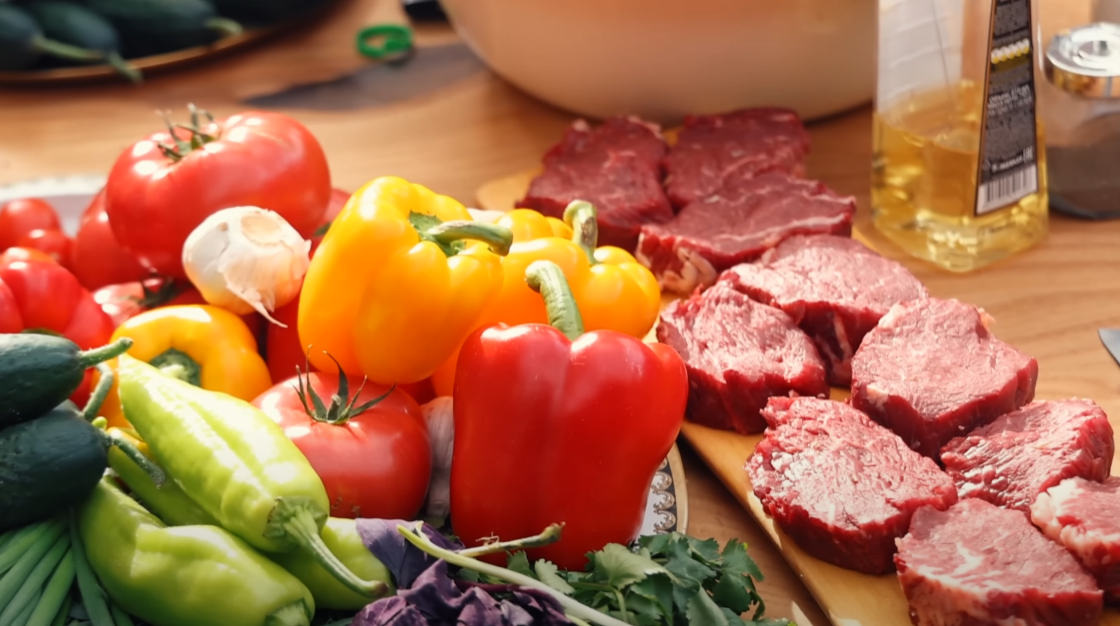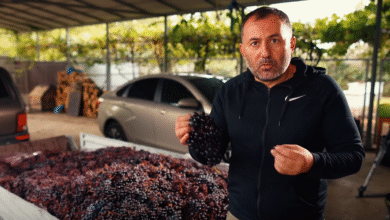Food
Cutlets & Cauldron Magic at Alan’s Yard: GEORGY KAVKAZ
Котлеты и Казан Волшебство во Дворе Алана

1. Ингредиенты / Ingredients (на 6–8 порций / for 6–8 servings)
- 800 г фарша (говядина, баранина или смешанный)
800 g ground meat (beef, lamb, or mixed) - 1 крупная луковица, мелко нарезанная
1 large onion, finely chopped - 2–3 зубчика чеснока, измельчённые
2–3 garlic cloves, minced - 1 яйцо
1 egg - 3–4 ст. л. панировочных сухарей или хлеба, размоченного
3–4 tbsp breadcrumbs or soaked bread - Соль и перец по вкусу
Salt and pepper to taste - 4–5 ст. л. жира (конич или масло)
4–5 tbsp fat (lard or oil) - 2–3 моркови, крупными кусками
2–3 carrots, cut large - 1–2 перца болгарских, крупно
1–2 bell peppers, large pieces - 1–1.5 л бульона или воды
1–1.5 L broth or water - Пучок зелени (кинза, укроп)
Bunch of herbs (cilantro, dill)
2. Подготовка фарша / Preparing the Meat Mixture
🇷🇺
- В миске смешайте фарш, лук, чеснок, яйцо и сухари.
- Посолите и поперчите, хорошо вымесите до однородности.
- Сформируйте котлеты размером с абрикос.
🇬🇧
- Mix ground meat, onion, garlic, egg, and breadcrumbs in a bowl.
- Season with salt and pepper, knead until uniform.
- Form apricot-sized patties.
3. Жарка котлет / Pan-Frying the Cutlets
🇷🇺
- На сильном огне в казане растопите жир.
- Обжарьте котлеты до румяной корочки (2–3 минуты с каждой стороны).
- Выложите на тарелку — чтобы потом не разварились.
🇬🇧
- Heat fat in a cauldron over high flame.
- Pan-fry cutlets until golden (2–3 min each side).
- Remove and set aside.
4. Готовка в казане / Cooking in the Cauldron
🇷🇺
- В том же казане обжарьте крупные куски моркови и перца.
- Верните котлеты, залейте бульоном или водой до частичного погружения.
- Убавьте огонь и тушите под крышкой 25–30 минут, пока овощи не станут мягкими и мясо не прожарится.
🇬🇧
- In the same cauldron, sauté carrot and pepper chunks.
- Return cutlets, pour in broth/water to partially cover.
- Cover and simmer on low 25–30 minutes until vegetables tender and meat cooked through.
5. Подача / Serving
🇷🇺
- Перед подачей добавьте порубленную зелень, дайте настояться 5 минут.
- Подавайте прямо из казана с хлебом или рисом.
🇬🇧
- Just before serving, stir in chopped herbs and let rest 5 minutes.
- Serve straight from the cauldron with bread or rice.
🔥 Советы / Tips
- Первоначальная обжарка создаёт ароматную корочку и сохраняет сочность.
Initial searing locks flavor and juiciness. - Тушение в казане погружает в тот самый колорит традиционного двора.
Cauldron simmer builds homely, fire-driven flavor. - Простые овощи как морковь и перец — прекрасно балансируют мясо.
Simple veggies complement the meat beautifully. - Зелень в конце сохраняет свежесть и яркость вкуса.
Herbs at the end preserve freshness. - Подача из казана — символ тепла, щедрости и общности.
Serving from the cauldron symbolizes warmth and community.








